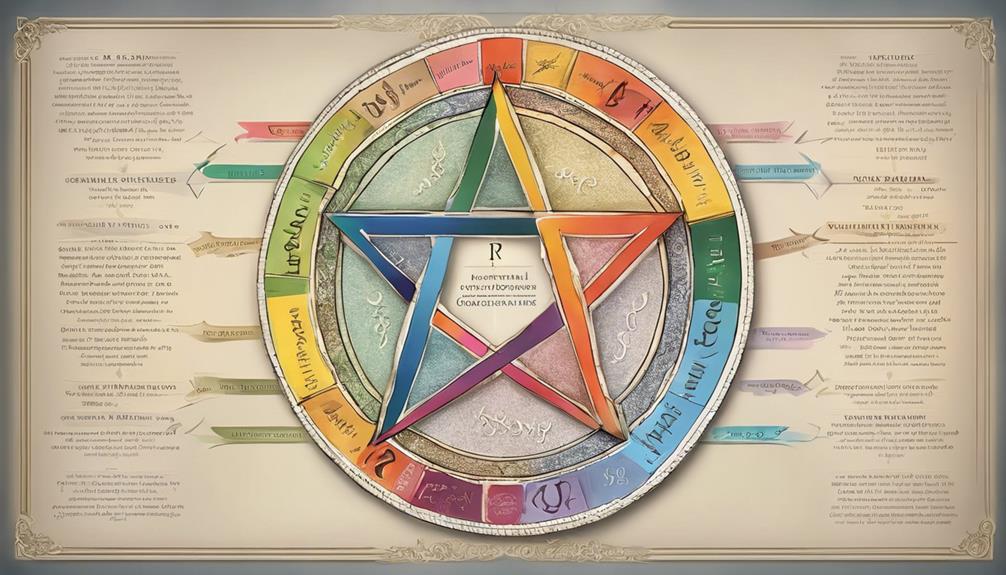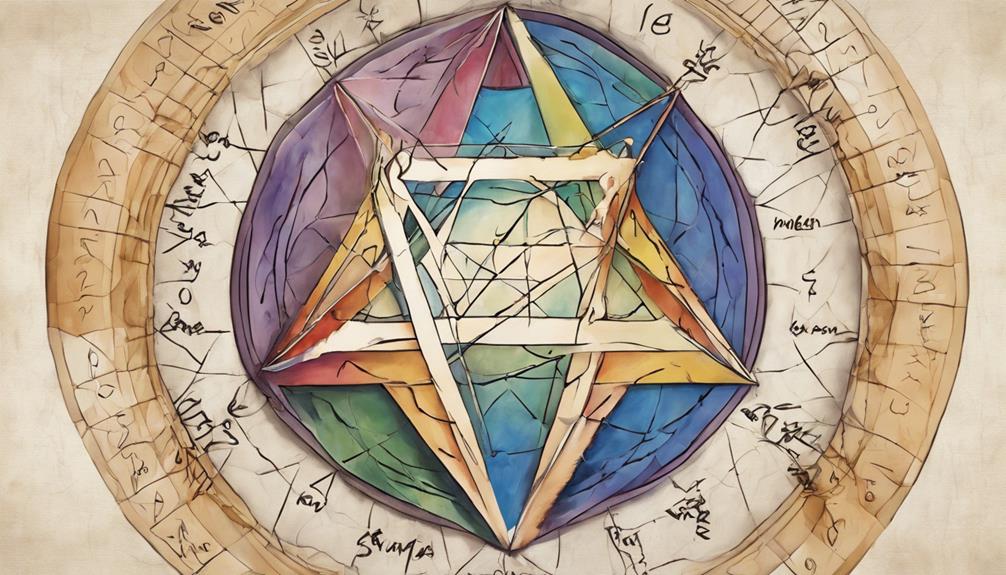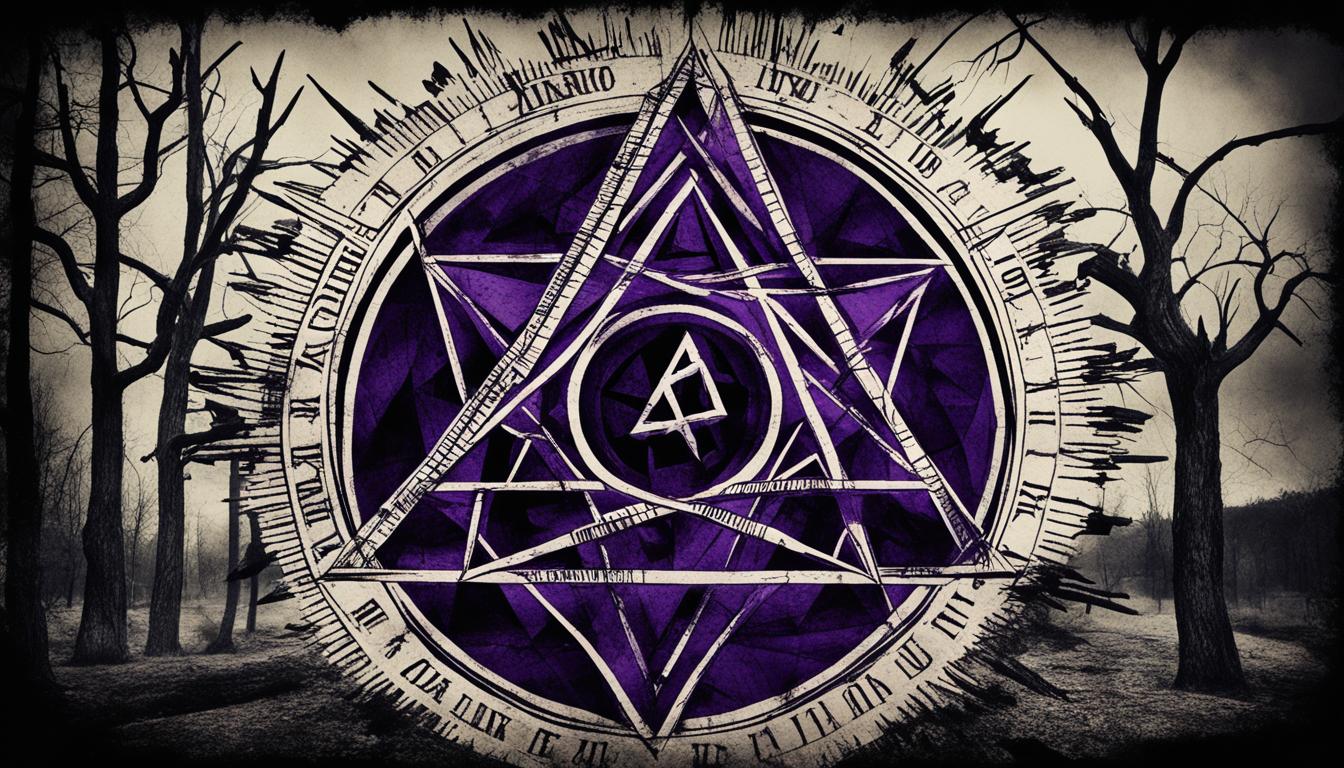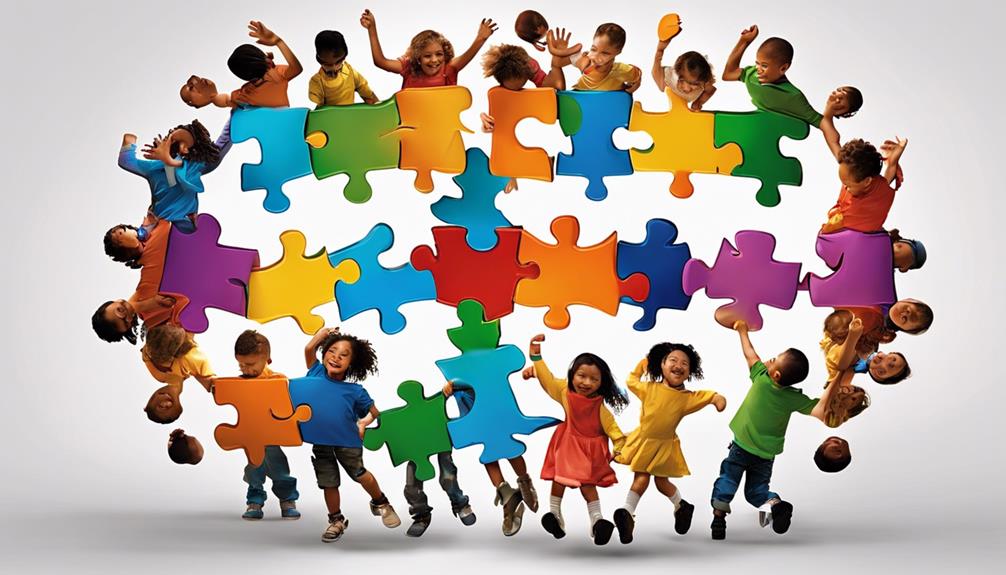As we delve into the complex dance between Enneagram Type 2 and Type 4, envision a delicate harmony of compassion and self-reflection molding their bond.
The interplay between these personalities unveils a tapestry of emotions and needs that intertwine in ways both beautiful and complex.
By unpacking the nuances of their interactions, we uncover layers that speak to the core of human relationships, offering insights that can enrich our understanding of love, support, and personal growth within the context of these dynamic enneatypes.
Key Takeaways
- Both Type 2 and Type 4 prioritize emotional depth and authenticity in their relationships.
- Type 2's nurturing support complements Type 4's need for validation and uniqueness.
- Challenges may arise from differing emotional processing styles and needs for validation.
- Strengthen the bond through active listening, gratitude, vulnerability, and shared experiences.
Overview of Enneagram 2 and 4
What makes Enneagram Type 2 and Type 4 unique in their motivations and behaviors?
The Enneagram offers profound insights into the emotional needs and relationship dynamics of Type 2, the Helper, and Type 4, the Individualist. Type 2 individuals are driven by a profound desire to assist and support others, often at the expense of their own well-being. They thrive on creating deep emotional connections and can struggle to prioritize their personal needs over those of their loved ones.
On the other hand, Type 4s are motivated by a quest for authenticity and uniqueness. They value emotional depth and self-expression, seeking relationships that allow them to explore their complex inner worlds openly.
Despite their differences, both Type 2 and Type 4 share a common longing for emotional intimacy and connection in their relationships. Their innate sensitivity, artistic tendencies, and struggles with intense emotions create a unique dynamic that can either deepen their bond or lead to misunderstandings. Understanding these core motivations can pave the way for more meaningful and supportive interactions between Type 2s and Type 4s.
Key Similarities and Differences

In exploring the key similarities and differences between Enneagram Types 2 and 4, we uncover intriguing insights into their emotional dynamics and relational approaches.
Both Type 2 and Type 4 prioritize emotional depth and authenticity in their relationships, seeking genuine connections that resonate with their innermost feelings. However, a notable difference lies in how they navigate their emotions. Type 2 individuals may sometimes suppress their own feelings in favor of helping others, while Type 4s value emotional expression and embrace their uniqueness.
Despite these differences, both types share a common struggle with feelings of inadequacy and a need for validation from their loved ones. Setting boundaries and effective communication can be challenging for both Type 2 and Type 4, albeit in different ways. The nurturing nature of Type 2 complements the validation-seeking tendencies of Type 4, while Type 4's pursuit of authenticity inspires Type 2 to express themselves more openly and honestly. This dynamic interplay of emotional honesty and support forms the foundation of the relationship dynamics between these two Enneagram types.
Complementary Traits and Dynamics
With shared emotional sensitivity and a mutual appreciation for deep connections, Enneagram Type 2 and Type 4 exhibit complementary traits that enrich their relationship dynamics. When Type 2 and Type 4 come together, their unique qualities create a harmonious blend that fosters intimacy and understanding. Here are some ways in which their traits complement each other:
- Nurturing Support: Type 2's natural inclination to nurture and support aligns well with Type 4's need for validation and authenticity, creating a safe space for emotional expression.
- Creativity and Depth: Type 4's creativity and emotional depth inspire Type 2 to explore and express themselves more freely, leading to a deeper connection based on shared experiences.
- Prioritizing Emotional Needs: Both types prioritize emotional needs and intimacy, laying a strong foundation for a relationship built on empathy and mutual understanding.
- Enhanced Communication: Their complementary traits encourage clear communication, setting boundaries, and effective emotional management, crucial elements for a harmonious Type 2:4 relationship dynamic.
Challenges in the Relationship

Navigating the complexities of an Enneagram Type 2:4 relationship can pose various challenges that require understanding and patience from both partners. The emotional dynamics between a Type 2 and a Type 4 can be intricate, often leading to specific relationship challenges. The Enneagram Institute highlights that tightening defenses in this relationship dynamic can polarize the couple, resulting in misunderstandings. The Individualist (Type 4) processes emotions differently, needing downtime for reflection, which may be misunderstood by the Helper (Type 2). This difference in emotional processing can lead the Helper to perceive the Individualist as self-absorbed and temperamental, while the Individualist may find the Helper needy and overly involved, impacting the overall relationship dynamics. Without finding a balance, both partners in a Type 2:4 relationship risk feeling unappreciated and drained, potentially harming the relationship's health.
| Relationship Challenge | Impact on Relationship Dynamics |
|---|---|
| Tightening defenses | Polarization and misunderstandings |
| Emotional processing differences | Misinterpretations and feelings of being misunderstood |
| Perception of needs | Feeling unappreciated and drained |
Tips for Strengthening the Bond
To foster a deeper connection between Enneagram Type 2 and Type 4, prioritizing open communication and empathy is essential. In nurturing the emotional bond between these types, creating a safe space where both individuals feel seen and understood is paramount.
Here are some tips to help strengthen the bond:
- Practice Active Listening: Take the time to truly listen to each other's feelings and needs without judgment.
- Express Gratitude: Regularly acknowledge and appreciate the efforts and support provided by your partner.
- Encourage Vulnerability: Share your emotions and thoughts openly to deepen intimacy and trust.
- Engage in Joint Activities: Participate in activities that resonate with both of you to create shared experiences and memories.
Frequently Asked Questions
Do Enneagram 2 and 4 Get Along?
We absolutely get along! Enneagram 2 and 4 create a unique, deep bond filled with understanding and romance. Our connection thrives on emotional depth, authenticity, and mutual support, bringing out the best in each other.
Are 4s and 2s Compatible?
We find that Enneagram Type 4s and Type 2s can be highly compatible. Our shared focus on emotional depth and authenticity fosters a strong bond. Nurturing each other's needs and fostering creativity enriches our relationship.
What Is the Relationship Between 2 and 4?
In our experience, the relationship between Type 2 and Type 4 is marked by deep emotional connection and mutual support. We find that Type 2 boosts Type 4's confidence, while Type 4 brings creativity, fostering a beautiful bond.
What Are the Characteristics of a Type 4 and Type 2?
We are characterized by emotional depth and a quest for authenticity, valuing individuality and meaningful connections. Our creativity and desire for deep introspection drive us to express ourselves through art and seek love and connection in relationships.
What Are the Differences in Relationship Dynamics Between Enneagram 2 and 4, and Enneagram 2 and 9?
When comparing enneagram 2 and 4 relationship dynamics to enneagram 2 and 9 relationship dynamics, there are noticeable differences. Enneagram 2 and 4 can be more intense and emotionally charged, while enneagram 2 and 9 tend to have a more harmonious and peaceful dynamic. Understanding these distinctions can lead to healthier relationships.
Conclusion
As we navigate the complexities of Enneagram Type 2 and Type 4 relationships, it's important to remember that communication and understanding are key.
Did you know that 80% of conflicts in these relationships stem from miscommunication?
By prioritizing empathy, setting boundaries, and seeking support when needed, we can cultivate a stronger and more fulfilling bond.
Remember, we're in this together.
Eugene brings a fresh, dynamic voice to our platform as one of our talented Writers. Specializing in research-driven content, he explores the latest findings in psychology and personal growth, translating them into actionable insights for our readers. Eugene’s work is fueled by a curiosity about what makes us tick and a desire to help others unlock their potential.










